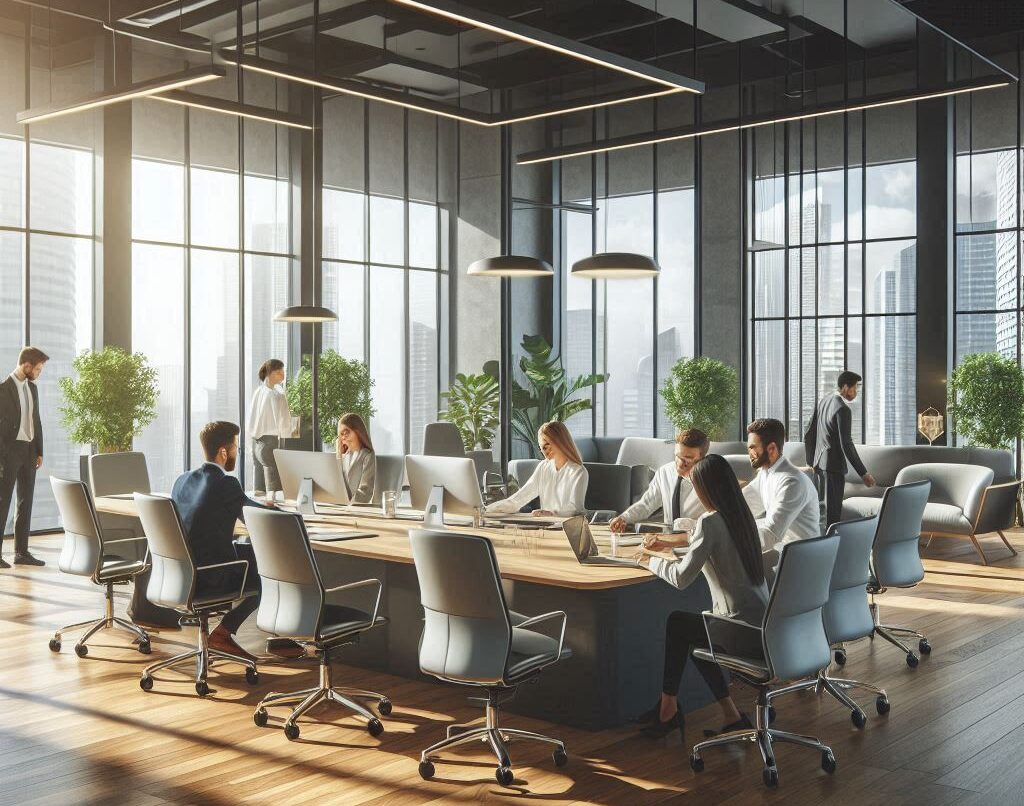Color Psychology in Office Design: What Your Workspace Says About You

Your office is more than just a place to work—it’s a reflection of your personality, brand, and work ethic. One of the most powerful yet often overlooked elements of office design is color. The colors you choose for your workspace can influence mood, productivity, and even creativity. Understanding color psychology can help you create an office environment that not only looks great but also supports your goals. Let’s explore how different colors impact office design and what your workspace might be saying about you.
1. The Impact of Color on Mood and Productivity
Colors have a profound effect on our emotions and behavior. In an office setting, the right color palette can boost focus, reduce stress, and inspire creativity. Here’s how different colors can influence your workspace:
Blue: Known for its calming and soothing effects, blue promotes focus and productivity. It’s ideal for tasks that require concentration and mental clarity.
Green: A refreshing and balanced color, green reduces eye strain and creates a sense of harmony. It’s perfect for creative and collaborative spaces.
Yellow: Bright and energizing, yellow stimulates creativity and optimism. However, too much yellow can be overwhelming, so use it as an accent color.
Red: A bold and dynamic color, red increases energy and urgency. It’s great for high-energy environments but should be used sparingly to avoid stress.
Neutral Colors (White, Gray, Beige): These colors create a clean, minimalist look and provide a neutral backdrop for other elements. They promote a sense of calm and professionalism.
Purple: Associated with luxury and creativity, purple encourages innovative thinking. It’s a great choice for design-focused or artistic workspaces.
Orange: A vibrant and social color, orange fosters enthusiasm and communication. It’s ideal for team-oriented environments.
2. What Your Office Colors Say About You
The colors you choose for your office can reveal a lot about your personality and work style.
Blue: You value stability, focus, and efficiency. Your workspace is likely organized and designed for maximum productivity.
Green: You prioritize balance, growth, and creativity. Your office probably feels welcoming and inspires collaboration.
Yellow: You’re optimistic, energetic, and innovative. Your workspace is likely bright and full of creative energy.
Red: You’re bold, ambitious, and action-oriented. Your office reflects your drive and determination.
Neutral Colors: You prefer simplicity, professionalism, and a clutter-free environment. Your workspace is clean, modern, and timeless.
Purple: You’re imaginative, sophisticated, and forward-thinking. Your office likely has a unique and artistic vibe.
Orange: You’re social, enthusiastic, and approachable. Your workspace is probably lively and encourages teamwork.
3. How to Choose the Right Colors for Your Office
Selecting the perfect color scheme for your office depends on the type of work you do and the atmosphere you want to create. Here are some tips to help you decide:
Identify Your Goals: Are you looking to boost productivity, encourage creativity, or create a calming environment? Choose colors that align with your objectives.
Consider the Size of the Space: Light colors like white and pastels can make a small office feel larger, while dark colors like navy or charcoal add depth and sophistication to larger spaces.
Balance Bold and Neutral Tones: If you want to incorporate bold colors, balance them with neutral tones to avoid overwhelming the space.
Think About Lighting: Natural light enhances colors, while artificial light can alter their appearance. Test your chosen colors under different lighting conditions.
Incorporate Brand Colors: If you’re designing a corporate office, consider using your brand’s colors to reinforce your identity and create a cohesive look.
4. Practical Tips for Using Color in Office Design
Here are some creative ways to incorporate color psychology into your office design:
Accent Walls: Paint one wall in a bold color to create a focal point without overwhelming the space.
Furniture and Decor: Use colorful furniture, rugs, or decor items to add pops of color to a neutral office.
Artwork: Choose artwork that features your desired colors to tie the room together.
Plants: Add greenery to bring in natural shades of green and create a calming atmosphere.
Lighting: Use colored lighting or lampshades to subtly influence the mood of the space.
5. Real-Life Examples of Color Psychology in Offices
Creative Agencies: Often use vibrant colors like orange, yellow, and purple to inspire innovation and energy.
Corporate Offices: Typically stick to neutral tones like white, gray, and blue to promote professionalism and focus.
Wellness Spaces: Incorporate calming colors like green and blue to create a relaxing environment.
Final Thoughts
Color psychology is a powerful tool in office design. By carefully selecting colors that align with your goals and personality, you can create a workspace that not only looks great but also enhances productivity, creativity, and well-being. Whether you prefer the calming effects of blue, the energy of red, or the balance of green, your office colors can say a lot about who you are and how you work.
